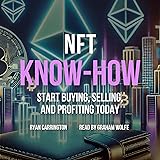The world of cryptocurrency trading is often characterized by rapid movements and unexpected turns. As highlighted in the accompanying video, Hamilton from Bitcoin Beats delves into the intricate patterns and potential scenarios for Bitcoin’s price action. In late 2020, as the market approached the festive season, Bitcoin showcased significant volatility, including an unexpected “pump” following a prior “dump.” This period underscored the critical importance of astute technical analysis and a disciplined trading strategy to navigate the market’s inherent unpredictability, especially around key psychological levels like $20,000.
The speaker’s analysis, originally published in December 2020, provides timeless insights into market dynamics, technical indicators, and strategic approaches that remain highly relevant for traders today. It emphasizes that while conventional technical analysis (TA) patterns are taught, Bitcoin often behaves in a “trappy” manner, necessitating a more nuanced approach focused on momentum and validated breakouts rather than blind adherence to textbook formations. Understanding these dynamics is crucial for anyone looking to make informed trading decisions in the fast-paced crypto landscape.
1. Decoding Bitcoin’s Short-Term Trajectories: Dumps, Pumps, and Retests
Bitcoin’s short-term movements frequently test the patience and skill of even experienced traders. The period discussed in the video saw a rapid “dump” followed by an equally swift and “unexpected” “pump.” This swift reversal pushed Bitcoin above a previously descending resistance line, suggesting a potential shift in market structure. However, the analyst cautions against immediate bullish assumptions, pointing to a potential retest of key levels.
Unhealthy Price Action and Rejection Points
The concept of “unhealthy” price action is central to sound trading. Unhealthy movements often refer to sharp, unsustainable rallies or drops that lack strong underlying volume or clear retests of support/resistance. The analyst notes Bitcoin was “resting on the price action channel” and could “get rejected here quite easily” below the ATR band. Historically, such conditions often precede further consolidation or corrective moves, rather than sustained breakouts. Traders are advised to prioritize confirmed price action rather than jumping into trades based on initial moves.
Key Short-Term Price Targets and Obstacles
While a “measure move” was identified towards $20,000, the path there was predicted to be a “grind” due to substantial overhead resistance. Breaking above $9,500 (reclaiming the ATR band) was presented as a crucial short-term bullish indicator, potentially opening the door to $20,000. However, this initial move was deemed a relatively small 2% gain by the speaker. A more significant target of $25,000 was projected if Bitcoin could decisively clear $21,500 within days. Conversely, a rejection around these levels could lead to a grind through moving averages, testing support zones like $18,700-$18,600.
2. Unveiling Market Liquidity with Bookmap Analysis
Beyond traditional candlestick charts, understanding the order book via tools like Bookmap offers invaluable insights into market depth and potential price movements. Bookmap visualizes pending buy and sell limit orders as a “heatmap,” revealing areas of significant liquidity that act as dynamic support and resistance walls.
Identifying Sell Walls and Support Floors
Large clusters of sell orders above the current price action form “sell walls,” representing significant resistance. The video highlights such a wall around the $20,000-$21,000 area, indicating concentrated selling pressure. Conversely, buy orders below the price form “support floors.” These walls are not static; they can be pulled or added, rapidly altering the market landscape. A single “market buy of 10,000 Bitcoin,” for instance, could theoretically wipe out a sell wall and push the price dramatically higher, potentially to $23,000 in the example given. However, the analyst notes such large, spontaneous moves are rare and often indicative of “whale” activity designed to trap unsuspecting traders.
The Last Barrier Before a Girthy Bull Run
The analysis suggests that the $20,000-$21,000 area, characterized by strong sell walls, represented a “last barrier” before a potentially “girthy bull run.” Clearing this zone, with its implied absence of strong resistance, could open the way for substantial upward price discovery. However, the analyst emphasizes caution, noting that previous large walls have led to significant rejections of more than $600 after fulfilling orders. The buying pressure was observed to be “wearing off” with dropping volume, suggesting a higher probability of a “reset” back to the mid-$18,000s before any sustained upward movement. This cautious outlook highlights the importance of confirming breakouts with sustained volume rather than simply reacting to initial price pushes.
3. The Perpetual Allure of CME Gaps: A Historical Perspective
CME (Chicago Mercantile Exchange) Bitcoin futures gaps are a recurring phenomenon that many traders closely watch. These gaps occur when the CME market closes for the weekend, then opens at a different price on Monday, leaving a “gap” on the chart. The prevailing wisdom, reinforced by the analyst, is that these gaps tend to “fill 100% of the time,” making them a significant factor in Bitcoin’s price trajectory.
The Institutional Mandate to Fill Gaps
The analyst asserts that institutions, adhering to their own “institutional rules” and technical analysis principles, typically aim to fill these gaps. While not an “in stone” guarantee, the historical probability of CME gaps filling is remarkably high. This means that a gap down often suggests a future move back up to fill it, and vice-versa. The video references a specific CME gap that formed over a weekend, underscoring its potential influence on Bitcoin’s path back to the $18,600 zone.
Ascending Triangles and Future Projections
The analysis ties the CME gap discussion to an ascending triangle pattern, projecting a measure move up to $21,600. This target aligns closely with the top of a broader price channel, adding confluence to the technical picture. While this pattern suggests a bullish continuation, the analyst reiterates that the pattern wasn’t yet “technically confirmed” in late 2020. The expectation was for the pattern to potentially fill out over the month, with a significant move not occurring until the New Year (January 2021). This long-term perspective emphasizes patience and waiting for confirmation rather than reacting prematurely to unconfirmed patterns.
4. Understanding Bitcoin’s Momentum and Trappy Behavior
Bitcoin’s market behavior often defies conventional trading wisdom, making it particularly “trappy.” The analyst shares crucial insights into how Bitcoin typically gains and loses momentum, often leading to significant pullbacks that catch many traders off guard.
The Typical Cycle of Momentum Loss
Based on observations over four to five years, Bitcoin generally exhibits a pattern: a wave up, a loss of the initial trendline, hitting a subsequent moving average, a bounce, then losing that moving average and testing lower levels. Momentum often fades after successive waves up, leading to sideways action, and then a “bigger pullback.” These pullbacks can be substantial, often 20-30%, and sometimes even 80% (as seen in severe market corrections). For instance, a 30% pullback from the then-current highs was projected to align with the 200-day moving average on a 24-hour chart, potentially bringing the price down to $17,000 or even lower (16K).
The Ascending Triangle: A 50/50 Proposition
While ascending triangles are conventionally taught as bullish patterns typically breaking to the upside, the analyst’s backtesting suggests a more nuanced reality for Bitcoin. In Bitcoin, these patterns are often “50/50,” meaning they can just as easily lead to a “trap” and a breakdown as they can to a breakout. This counter-intuitive insight highlights Bitcoin’s unique market dynamics, where “whale” activity and market psychology often lead to false breakouts designed to liquidate traders. Therefore, traders are advised to wait for clear breakouts and retests of key levels rather than entering based solely on pattern formation.
5. Strategic Trading: Waiting for Breakouts and Confirmations
The core of the analyst’s trading philosophy revolves around discipline, patience, and a reactive approach to the market, rather than predictive speculation. This strategy aims to capitalize on “girthy gains” from significant moves, avoiding the “child’s play” of choppy, unpredictable sideways action.
Identifying “Beefy Chicken Nugget Trades”
The speaker’s strategy prioritizes waiting for clear breakouts, followed by pullbacks and retests of new support/resistance levels. These confirmed moves, which can yield returns of 28%, 46%, or even 19% (for a $25K-$26K target), are deemed the “beefy chicken nugget trades.” In contrast, attempting to trade within tight, sideways accumulation zones is viewed as unproductive and often leads to frustration and liquidation, as these periods are designed to “trap” impatient traders.
Risk Management and the “Breakout Machine”
The analyst advocates for sensible leverage (e.g., 1x, not 1000x) and emphasizes that profit comes from patience, not constant trading. Traders should not feel compelled to make multiple trades daily, as this often leads to losses. The “Breakout Machine” indicator, developed by the analyst, is presented as a tool to identify high-probability, large-scale breakouts. This indicator factors in low volatility and volume (coiled-up conditions) before signaling a potential move. Updates to the tool have significantly reduced “drawdown” from “80%” in trappy areas, focusing instead on “100% plus” gains from major trends. This approach underscores a robust, data-driven methodology for capitalizing on significant market shifts while mitigating risks in uncertain conditions.







